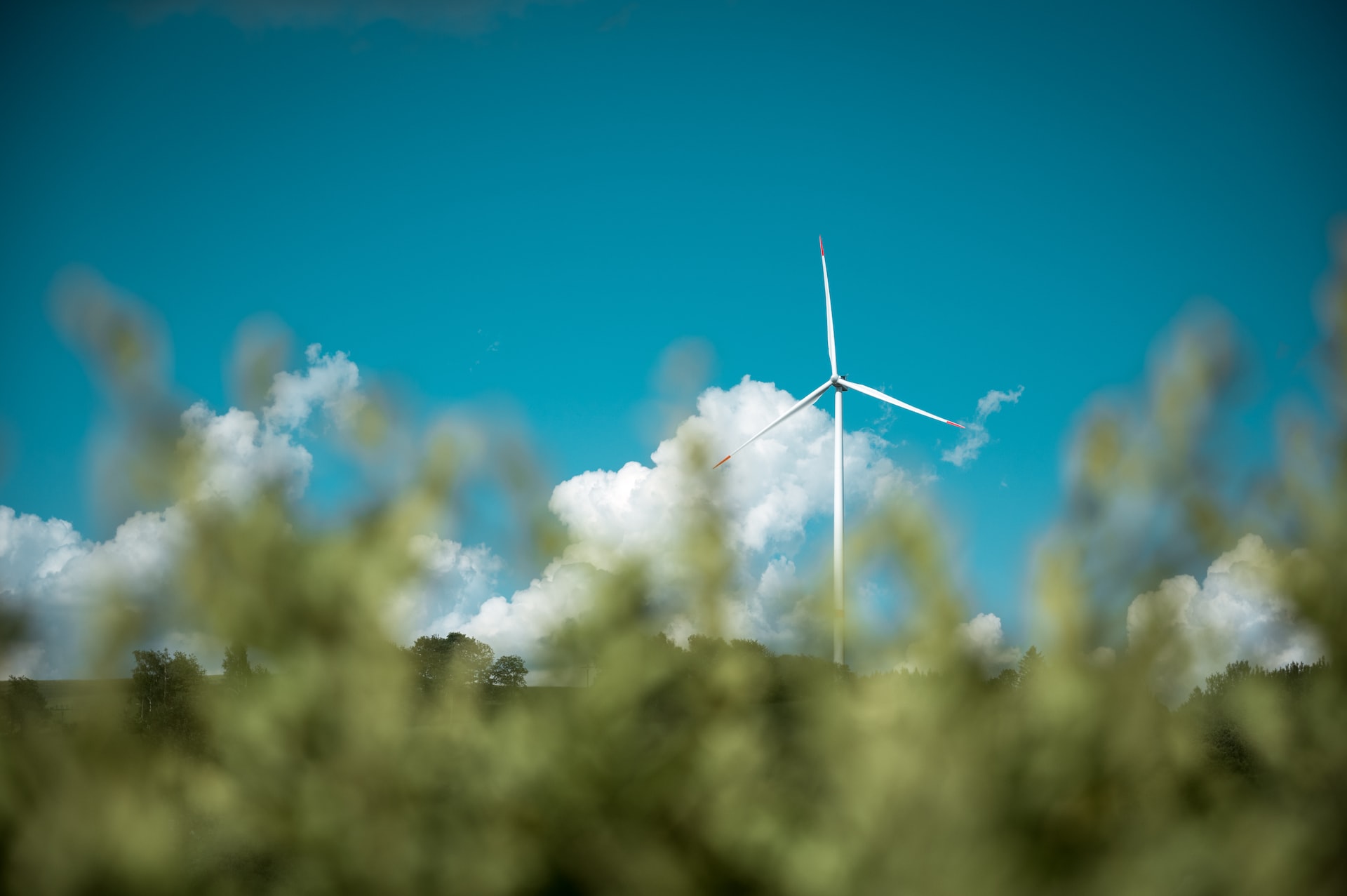Claims
B Corp Certification
B Corp Certification is a designation that a business has been verified as meeting high standards of performance, accountability, and transparency on factors ranging from employee benefits and charitable giving to supply chain practices and input materials. To be granted and to maintain certification, companies must receive a minimum score of 80 from an assessment of “social and environmental performance,” integrate B Corp commitments to stakeholders into company governing documents and pay an annual fee based on annual sales. Companies must re-certify every three years to retain B Corporation status. As of September 2022, there are 5,697 certified B Corporations across 158 industries in 85 countries.
Biodegradable
Biodegradable is a claim meaning that an item can be broken down into its base elements by bacteria, fungi, or some other biological process. Biodegradation is just the process of nature transforming materials into their component parts. Biodegradable plastic is not necessarily a sustainable practice if it “breaks down” into smaller microplastics which can still be harmful to the environment.
Carbon neutral
Carbon neutrality means having a balance between emitting carbon and absorbing carbon from the atmosphere in carbon sinks. A carbon sink is any system that absorbs more carbon than it emits. The main natural carbon sinks are soil, forests and oceans. In practice, this means that companies, processes and products become carbon neutral when they calculate their carbon emissions and compensate for what they have produced via carbon offsetting projects. It relates only to CO2, not any other environmental impacts.
Certified sustainable
There are a variety of sustainable certifications that organizations and products can achieve. These vary by country and region, and brands can expect more to be developed and rigidly enforced in the coming years.
Compostable packaging
Compostable packaging can be broken down and used on the soil. To be labeled as commercially compostable, packaging must break down within a strict 90-day time limit when placed in a compost pile.
Cradle to cradle
Cradle to Cradle (C2C) is a paradigm of cyclical reuse. A core tenet of C2C is the idea that “waste = food,” so that waste from one product or process can be used as “food” or inputs for another product or process.
ESG
ESG (environmental, social and governance) refers to how an organization is managing risks and opportunities. With ESG, organizations look beyond the environment to ensure true sustainability.
Life cycle assessment
Life cycle assessment takes a look at the impact of a commercial product, process, or service over its lifetime. For a CPG item, this includes the extraction of materials used to create it, its distribution and use, and its final disposal (whether that be recycling or landfill.)
Net zero and zero emissions
Net zero means cutting greenhouse gas emissions (including carbon dioxide, methane, nitrous oxide, etc) to as close to zero as possible, with any remaining emissions re-absorbed from the atmosphere.
Recycled
The process of collecting and processing materials that would otherwise be thrown away as trash and remanufacturing them into new products.
Reduced or zero waste
Reduced or zero waste signifies the conservation of resources by means of responsible production, consumption, reuse, and recovery of products, packaging, and materials without burning and with no discharges to land, water, or air that threaten the environment or human health.
Responsible sourcing
Responsible sourcing, also known as supply chain responsibility, is a voluntary commitment by companies to consider social and environmental factors in their supply chain and supplier relationship management.
Social responsibility
Social responsibility means that businesses, in addition to maximizing shareholder value, must act in a manner benefiting society, not just the bottom line. Social responsibility has become increasingly important to investors and consumers who seek investments that not only are profitable but also contribute to the welfare of society and the environment.
Sustainable packaging
Sustainable packaging is any type of environmentally-friendly material used for storing, shipping, or shelving products.
Sustainable packaging
Sustainable packaging is any type of environmentally-friendly material used for storing, shipping, or shelving products.
Methods, Innovation and technology
Blockchain
Blockchain technology has been a thriving force for businesses, providing them with exceptional security and data transparency. It is a digitally distributed and decentralized ledger that allows business transactions to be traced and verified seamlessly. Blockchain technology has been proven to be effective at tracking products from their origin to their destination. This transparency allows businesses to track where their product comes from, how much they are paying for raw materials, and who is involved in its production. In addition, this information can be shared across multiple stakeholders to ensure that everyone is aware of what is going on throughout the supply chain.
Digital passport (EU)
Digital passports collect data about a product and its supply chain and make this information available so that all stakeholders, including consumers, can better understand the impact of the products they use. The hope is that this full view of the product life cycle will help facilitate the transition to a circular economy. Digital passports were introduced as part of the European Green Deal and the Circular Economy Action Plan (CEAP), a legislative package designed to make all physical goods in the EU more sustainable, circular, and energy-efficient throughout their life cycle.
Digital twin
A digital twin is a virtual representation of an object or system that spans its lifecycle, is updated from real-time data, and uses simulation, machine learning and reasoning to help make decisions. Once informed with such data, the virtual model can be used to run simulations, study performance issues and generate possible improvements, all with the goal of generating valuable insights—which can then be applied back to the original physical object.
GreenToken
GreenToken is a Chain-of-Custody supply chain solution that offers companies a new level of transparency in their complex raw material supply chain. Unlike every other approach, GreenToken achieves traceability without using complicated batches to track raw plastic waste inputs and finished product or packaging outputs, making GreenToken an ideal solution for the growing informal waste sector. What’s more, GreenToken’s cloud based solution uses blockchain to record chain of custody events, giving the system trust, auditability and immutable facts on plastic waste origin that can be easily verified in any new items made from the plastic waste. This enables CPG firms to prove that their plastic waste is being recycled and source new packaging from plastic waste, guaranteed by GreenToken, so they can meet their packaging sustainability targets.
Lab-grown meat
Lab-grown meat, also called cultured or synthetic meat, is created by harvesting cells from living animals. The cells are grown in a nutrient-rich environment until they reach a large enough size to eat.
Meat is among the most well-known cultured products, but many foods can be lab-grown. For example, lab-grown chocolate can be created with cells harvested from cocoa beans. Dairy products like milk can also be lab-grown using bacteria or fungi to create the same whey proteins found in cow’s milk. Because the milk does not come from an animal, it presents an interesting possibility for vegan diets.
Regenerative agriculture
Regenerative agriculture is a rehabilitative approach to farming and food systems, aimed at making a positive impact on the planet. This agricultural revolution involves farming practices that improve soil health, increase biodiversity, and increase carbon-capture to make a positive impact on the environment.
Regenerative farming practices include reducing the use of fertilizers, pesticides, and herbicides to mitigate the negative impact these chemicals may have on surrounding bird, bee, insect, and plant populations. Replanting native species and creating small ponds to make land more hospitable for insects and animals is another common regenerative practice, as well as simply recycling as much farm waste as possible.
Sustainable investment
Sustainable investing is an investing philosophy in which an investor takes a company’s environmental, social, and corporate governance (ESG) factors into account. This allows investment dollars to be used as a tool to promote positive societal impact and corporate responsibility without sacrificing long-term financial returns. Strategies for investing sustainably include avoiding companies that conflict with ESG principles and seeking out industries that are inherently more sustainable.
Vertical farming
Vertical farming is a next-generation practice of food production that involves growing produce in vertical stacks. Typically contained inside industrial units like freight crates, fresh produce is grown from floor-to-ceiling, year-round in a controlled, optimized environment. Since vertical farms use less land, they can flourish in urban environments, reducing transportation costs, emissions, and travel-induced nutrient loss. It often incorporates soilless farming techniques such as hydroponics, aquaponics, and aeroponics. Besides freight crates, common types of structures used for vertical farming include buildings, tunnels, and abandoned mineshafts.
Beyond the benefits of providing fresh local produce, vertical agriculture can also help alleviate the pressures of food insecurity and hunger. Currently, only a limited number of crops can be grown in vertical farms, such as lettuce, leafy greens, and herbs.
Vertical farming
Vertical farming is a next-generation practice of food production that involves growing produce in vertical stacks. Typically contained inside industrial units like freight crates, fresh produce is grown from floor-to-ceiling, year-round in a controlled, optimized environment. Since vertical farms use less land, they can flourish in urban environments, reducing transportation costs, emissions, and travel-induced nutrient loss. It often incorporates soilless farming techniques such as hydroponics, aquaponics, and aeroponics. Besides freight crates, common types of structures used for vertical farming include buildings, tunnels, and abandoned mineshafts.
Beyond the benefits of providing fresh local produce, vertical agriculture can also help alleviate the pressures of food insecurity and hunger. Currently, only a limited number of crops can be grown in vertical farms, such as lettuce, leafy greens, and herbs.
Regulations
Carbon border levy
Also called the carbon border adjustment mechanism (CBAM), the European Commission proposed this regulation to protect European industries from goods produced more cheaply in countries with laxer environmental protections. When businesses import goods into the E.U., they must buy a “CBAM certificate” which makes up the difference between the carbon price paid in the country of production and the price of carbon allowances in the EU.
Circular Economy Action Plan (CEAP)
The new action plan announces initiatives along the entire life cycle of products. It targets how products are designed, promotes circular economy processes, and encourages sustainable consumption. It aims to ensure that waste is prevented and the resources used are kept in the EU economy for as long as possible. It introduces legislative and non-legislative measures targeting areas where action at the EU level brings real added value.
EU CSRD
CSRD Stands for “Corporate Sustainable Reporting Directive.” EU rules require large companies to publish regular reports on the social and environmental impacts of their activities. This helps investors, civil society organizations, consumers, policy makers, and other stakeholders to evaluate the non-financial performance of large companies. It also encourages these companies to develop a responsible approach to business.
EU ETS
The EU ETS is a central pillar of the EU’s policy to combat climate change as well as the EU’s best lever for reducing greenhouse gas emissions cost-effectively. It is the world’s first major carbon market and remains the biggest one.
EU Green Deal
The European Green Deal (EGD), approved 2020, is a set of policy initiatives by the European Commission with the overarching aim of making the European Union (EU) climate neutral in 2050. An impact-assessed plan will also be presented to increase the EU’s greenhouse gas emission reductions target for 2030 to at least 50% and towards 55% compared with 1990 levels. The plan is to not only review each existing law on its climate merits but also introduce new legislation on the circular economy, building renovation, biodiversity, farming and innovation. The EGD policies will likely impact trade within and imports to the EU, and it is possible that environmental and sustainability standards will become stricter at a later stage. This will mean more requirements for businesses from countries that export to the EU.
EU Taxonomy
The EU Taxonomy is a system for companies to identify environmentally sustainable economic activities and investments. The EU Taxonomy provides a minimum standard across sustainability disclosure requirements, effectively creating a green investment rule book specifying which investments can be considered sustainable. It includes detailed criteria for each economic activity to gain a green label. For example, a car manufacturer earning a green label would have to show investments toward EVs or make manufacturing centers net-zero. This helps identify green investments, promote transparency, and prevent greenwashing within financial and non-financial sectors.
Extended Producer Responsibility
Extended Producer Responsibility (EPR) is a policy approach under which producers are given a significant responsibility—which can be financial as well as physical—for the treatment or disposal of post-consumer products. Assigning such responsibility could in principle provide incentives to prevent waste at the source, promote product design for the environment, and support the achievement of public recycling and materials management goals.
Green hushing
Green hushing indicates that companies are choosing not to publicize details of their climate targets to avoid scrutiny and allegations of greenwashing.
Greenlighting
Greenlighting is when company communications (including advertisements) highlight a particularly green feature of its operations or products, however small, to draw attention away from other parts of its operations that are harmful to the environment.
Greenrinsing
Greenrinsing refers to when a company regularly changes its ESG targets before they are achieved.
Greenwashing
Greenwashing is the process of conveying a false impression or misleading information about the way a company’s products are environmentally sound. Greenwashing involves making an unsubstantiated claim to deceive consumers into believing that a company’s products are environmentally friendly or have a greater positive environmental impact than they actually do.
The Green Claims Code (U.K.)
The Green Claims Code, created by the U.K. Government in 2021, is an extensive set of guidelines which give businesses a framework for determining whether their environmental claims are genuine. Designed by the Competition and Markets Authority (CMA) to combat greenwashing, the code helps consumers trust that the claims made by businesses are as beneficial for the environment as they seem.
Non-Financial Reporting Directive (NFRD)
The Non-Financial Reporting Directive is an EU law which requires certain large companies to disclose information about the way they operate and manage social and environmental challenges. The NFRD also lays out rules for the disclosure of non-financial and diversity information by certain large companies.
SEC (U.S.)
The U.S. Securities and Exchange Commission (SEC) launched the Climate and ESG Task Force within the Division of Enforcement to develop initiatives to proactively identify ESG-related misconduct consistent with increased investor reliance on climate and ESG-related disclosure and investment.
Supply Chain Act (Germany)
In June 2021, the German parliament passed a new law that will require large companies to conduct supply chain due diligence. They must take steps to identify, prevent and address human rights and environmental issues in their own activities and in their direct suppliers’ operations. From 2023, the requirements will apply to companies, or branches of companies, in Germany with more than 3,000 employees. This will be extended in 2024 to cover companies with more than 1,000 employees.
Taskforce on Climate-related Financial Disclosures (TCFD)
Climate change and the financial health of companies are inextricably connected. The Taskforce on Climate-related Financial Disclosures (TCFD) recommends information companies should disclose so investors, lenders, insurance underwriters, and other stakeholders can adequately assess and price financial risks and financial impact related to climate change.
In other words, because climate change has a significant impact on the long-term value of a company, allocators of capital need to understand a company’s potential climate-related risks to understand investment risks. The TCFD began as a voluntary set of recommendations intended to guide investor-grade risk disclosures and is now the common thread across international legislation on climate disclosure, including the U.S., E.U., U.K., Switzerland, Singapore, Hong Kong, New Zealand, and Japan.
Taskforce on Climate-related Financial Disclosures (TCFD)
Climate change and the financial health of companies are inextricably connected. The Taskforce on Climate-related Financial Disclosures (TCFD) recommends information companies should disclose so investors, lenders, insurance underwriters, and other stakeholders can adequately assess and price financial risks and financial impact related to climate change.
In other words, because climate change has a significant impact on the long-term value of a company, allocators of capital need to understand a company’s potential climate-related risks to understand investment risks. The TCFD began as a voluntary set of recommendations intended to guide investor-grade risk disclosures and is now the common thread across international legislation on climate disclosure, including the U.S., E.U., U.K., Switzerland, Singapore, Hong Kong, New Zealand, and Japan.
Taskforce on Climate-related Financial Disclosures (TCFD)
Climate change and the financial health of companies are inextricably connected. The Taskforce on Climate-related Financial Disclosures (TCFD) recommends information companies should disclose so investors, lenders, insurance underwriters, and other stakeholders can adequately assess and price financial risks and financial impact related to climate change.
In other words, because climate change has a significant impact on the long-term value of a company, allocators of capital need to understand a company’s potential climate-related risks to understand investment risks. The TCFD began as a voluntary set of recommendations intended to guide investor-grade risk disclosures and is now the common thread across international legislation on climate disclosure, including the U.S., E.U., U.K., Switzerland, Singapore, Hong Kong, New Zealand, and Japan.







